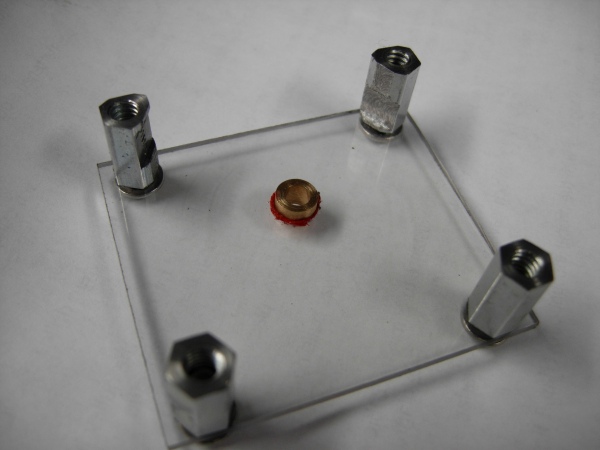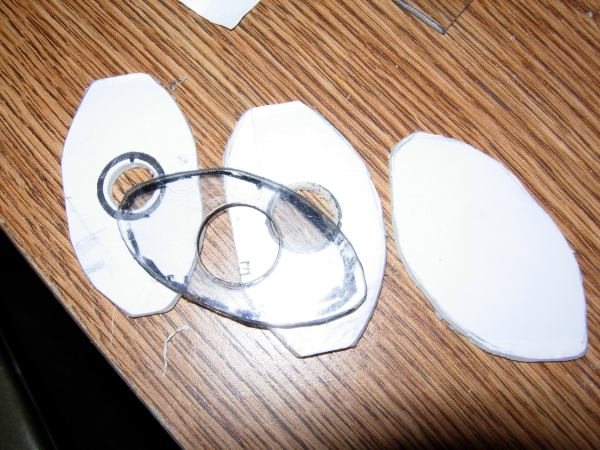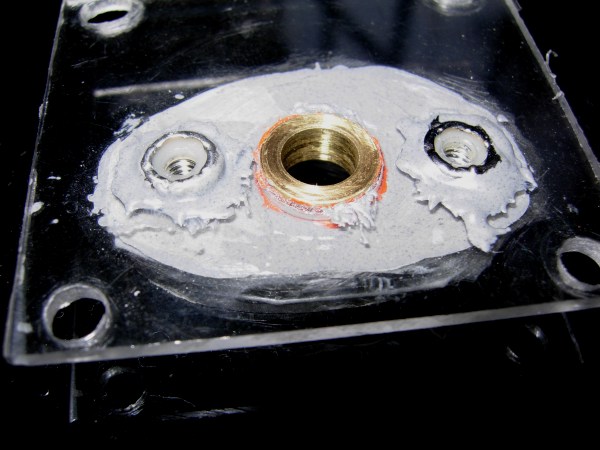Clinic
You CAN do it...
Fabricating a TPS Driver |

|
| Written by Randy Fox (randysgym) | |
| Thursday, 27 August 2009 | |
|
Page 6 of 10
Fabricating the Framework or PlatesI built my plates from the following:
See photos and diagram below.
There were several tricky parts in building the framework:
The plexiglass plates were drilled for the stand-offs so that the stand-offs were flush with the edges of the plates. Also, the plates were drilled for the axle pivot bushings at a point centered side-to-side. The next step was to make the axle pivot bushings. I made mine in my mini machine lathe, but you could buy some ready-made bushings through a clock parts supplier, or perhaps an R/C model store. See photos and diagram of mine below.
Next, the bushings were 'glued' into the plates. The smaller bushing was secured using silicone, high-temp, RTV, gasket maker. I figured using silicone would allow me to easily replace the bushing some day, as needed. See photo below.
The bigger bushing needed stronger glue. I ended up using small amounts of JB Weld, which I hope to be able to file away, should the need arise to replace that bushing. After the bushings were in, I needed to create a ‘well’ for the Yamaha TPS unit, since I had decided not to make any modifications (cutting, filing, or trimming) to the TPS. Tip: By keeping the Yamaha TPS unit stock, I could do a simple swap-out, in case mine failed at some point down the road. The ‘well’ I created was built up from the following (in order, from bottom to top):
The first 4 layers were glued together, and the bottom layer (sheet metal) of the stack was glued to the plate. The top 2 layers (rubber and top sheet metal layer) were left unglued. See photos below.
I made the ‘well’ oval shaped for no reason in particular. Once the ‘well’ was glued up, I reduced the overall height a little, to position the Yamaha TPS to the proper depth. To do this, I just sanded off the top plexiglass layer of the ‘well’ until proper depth was achieved. I secured the Yamaha TPS unit to my plate via 2, long, stainless screws, nyloc nuts, and a couple of washers. I decided to embed the nuts into the ‘well’ so they would be near-flush with the inside of my plate to prevent interference with pulley movement. By fixing the nuts into the plate, I am now able to adjust the stock Yamaha TPS unit by simply loosening the screws, just like it was intended. To embed the nuts, I first glued my ‘well’ together (as stated above) using JB Weld, being very careful to line up the big holes for the TPS. Next, I carefully drilled 2 shallow holes into the plate, large enough to accommodate the nuts, that were aligned with through-holes I had already drilled to line up with the Yamaha TPS mounting holes. Then I JB-Welded the nuts to the plate, being very careful not to get glue onto the threads or the through-holes. See photo below.
It may not look pretty, but it’s strong.
|
The Road Star Clinic is a collaborative community of riders who archive and publish user contributed technical data about Yamaha Road Star motorcycles.










